Le Mans (not just) for Dummies – A brief history
Initial version courtesy of Marcel ten Caat and Gabriel Portos from www.planetlemans.com. All pictures are in the public domain except as noted otherwise.
 - A request to the very old hands: Pre-1975 Le Mans pictures for the illustration of this story are needed - if someone could help us out with this, that would be great! Any leads to pictures which are in the public domain are also appreciated — Werner 2010/02/18 10:19
- A request to the very old hands: Pre-1975 Le Mans pictures for the illustration of this story are needed - if someone could help us out with this, that would be great! Any leads to pictures which are in the public domain are also appreciated — Werner 2010/02/18 10:19
![]() Chapter Editor:aricus654 will do the 2015 update!
Chapter Editor:aricus654 will do the 2015 update!
Once upon a time
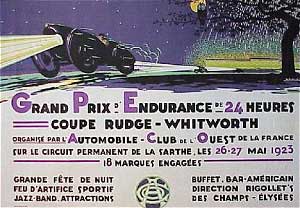 It is 16.00 hours on May 26th, 1923 and 33 cars await the start signal under the pouring rain. A gruelling 24 hour race awaits them running in a road circuit of 17.262 kilometres. The drivers do not know it yet but this is the birth of the race of races, the first edition of the 24 Heures du Mans. The idea of a 24-hour race was not new and actually a few of them had taken place both in Europe and the United States already when 3 visionaries with initiative created what would become the most popular long distance race in the world. It was the combination of George Durand (secretary of the Automobile Club de l'Ouest, the A.C.O.) and Charles Faroux (editor of La Vie Automobile) that started turning an idea into reality after they met at the 1922 Paris Motor Show. The final ingredient was the involvement of Emile Coquille, Rudge-Whitworth wheels representative in France who committed a donation of 100.000 French Francs and established the triennial Rudge-Whitworth Trophy for the races of 1923-24-25.
It is 16.00 hours on May 26th, 1923 and 33 cars await the start signal under the pouring rain. A gruelling 24 hour race awaits them running in a road circuit of 17.262 kilometres. The drivers do not know it yet but this is the birth of the race of races, the first edition of the 24 Heures du Mans. The idea of a 24-hour race was not new and actually a few of them had taken place both in Europe and the United States already when 3 visionaries with initiative created what would become the most popular long distance race in the world. It was the combination of George Durand (secretary of the Automobile Club de l'Ouest, the A.C.O.) and Charles Faroux (editor of La Vie Automobile) that started turning an idea into reality after they met at the 1922 Paris Motor Show. The final ingredient was the involvement of Emile Coquille, Rudge-Whitworth wheels representative in France who committed a donation of 100.000 French Francs and established the triennial Rudge-Whitworth Trophy for the races of 1923-24-25.
So, with some strict (and sometimes complicated) homologation rules and a winner which would be declared only after 3 years of running for the main trophy, the first race started in 1923 with 30 French entries, 2 Excelsiors from Belgium and a single private Bentley representing the UK. By 16.00 on Sunday and after 2209.5 km covered in 128 laps, it was the Chenard-Walcker of André Lagache-René Léonard that crossed the finish line first although it would not be recognized as winner, rather as top qualified in the Rudge-Whitworth Cup. A whole odyssey with rain, mud, no windscreen wipers and a lot of champagne consumed at the “Hartford Hotel” (a sort of proto-paddock of the time), the experience encouraged participants to engage the year after and 1924 saw 40 entries for the June scheduled race. Just one of them was non-French and it would win the race: the number 8 Bentley of John Duff and Frank Clement which had learned the 1923 lesson installing front brakes to improve their performance. The following two years saw the domination of André Rossignol and his Lorraine-Dietrich, despite the increased international presence and entries ranging in the 60 cars.
1925 saw the first appearance of the “Le Mans start” which would be a trademark of the race (until the famous Jacky Ickx walk to his Ford GT40 in 1969) as well as the first two fatal accidents on the track. The Bentleys were very competitive but eventually retired so it was the Chenard-Walckers to win the only ever triennial cup and the newly established biennial cup. 1926 saw new pits, a new prize (the Index of Performance) and another French victory, the last one until 1932. And the reason for the first 4 of that 5-year drought was no other than the Bentley Boys.
The Bentley Boys
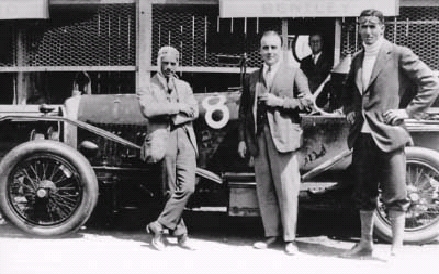 A fundamental step in the creation of the Le Mans legend, the 4 victories in a row of the green machines put the La Sarthe race into the definitive map of the greatest events in the world. Driven by the men that would become the everlasting symbol of the Gentleman Driver, the Bentleys were unbeatable until the appearance of another symbol of the big race, its first Italian winner. The names of Woolf Barnato, Sammy Davis, Dudley Benjafield, Bernard Rubin, Henry Birkin and Glen Kidston would forever bind the UK fans and teams to the dream of a 24-Hour win.
A fundamental step in the creation of the Le Mans legend, the 4 victories in a row of the green machines put the La Sarthe race into the definitive map of the greatest events in the world. Driven by the men that would become the everlasting symbol of the Gentleman Driver, the Bentleys were unbeatable until the appearance of another symbol of the big race, its first Italian winner. The names of Woolf Barnato, Sammy Davis, Dudley Benjafield, Bernard Rubin, Henry Birkin and Glen Kidston would forever bind the UK fans and teams to the dream of a 24-Hour win.
The 1931 victory would also be for a British team, however on an Italian car which would reign for another 4 years: the mythical Alfa Romeo 8C. The circuit, that had been shortened in 1929 to 16.430 km and would go to 13.492 km in 1932 was constantly evolving in terms of facilities, safety and road surface, therefore allowing higher speeds to be achieved and longer distances to be covered. 1933 saw 233 laps (3144km) being covered by the winning car, a works Alfa Romeo where Raymond Sommer (who had won the year before with Luigi Chinetti) shared the drive with the legendary Tazio Nuvolari, in his only (very successful!) appearance at Le Mans. Lagonda, Bugatti (twice) and Delahaye would be the last pre-war winners, the race not being run in 1936 due to a strike. The name of Jean-Pierre Wimille would be associated with both Bugatti successes (1937 with Robert Benoist, 1939 with Pierre Veyron), reaching a record 248 laps and 3354.7 km covered on the last summer before the start of World War II. By this time the Le Mans 24 hours was established as a top international event, one that manufacturers wanted to attend and win to show their cars' performance in the most demanding of events; a race where anything could happen and unpredictability was a fundamental part of the plot, circumstances that changed constantly and unimaginable reversals of fortune, the very same components that attract so many people to this day to Le Mans in mid-June.
The war would put a stop to the race and 10 long years would go by before a swarm of racing cars would return to La Sarthe to take history from where the Bugattis had left it. The spirit of the race would be reborn with multiplied energy and the 1950s would witness more amazing victories (including the first of a small red car with a prancing horse) and the biggest tragedy ever in motor sport history.
After the war
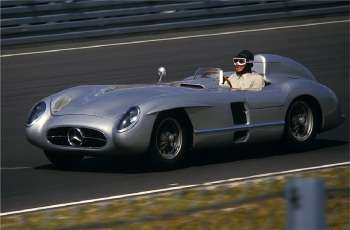 By 1944 the location of the Le Mans circuit next to the local airfield had taken its toll. Practically nothing had been left standing of the infrastructure after the bombings and even today unexploded bombs can be found when any modifications are going on at or near the track. So it was only through a titanic effort from the A.C.O. that the “24 Heures” could return in 1949 with new pits, new grandstands and a road surface in race condition. It was the start of a new era, an era where road racing would become the source of tales to tell your grandchildren, where races like the Mille Miglia, Carrera Panamericana or Targa Florio would flourish and attract the cream of the crop in terms of drivers, privateers and manufacturers. But the status that Le Mans had earned before the war as the greatest race would not change, and its fame would soar as communications became better and motor racing more popular.
By 1944 the location of the Le Mans circuit next to the local airfield had taken its toll. Practically nothing had been left standing of the infrastructure after the bombings and even today unexploded bombs can be found when any modifications are going on at or near the track. So it was only through a titanic effort from the A.C.O. that the “24 Heures” could return in 1949 with new pits, new grandstands and a road surface in race condition. It was the start of a new era, an era where road racing would become the source of tales to tell your grandchildren, where races like the Mille Miglia, Carrera Panamericana or Targa Florio would flourish and attract the cream of the crop in terms of drivers, privateers and manufacturers. But the status that Le Mans had earned before the war as the greatest race would not change, and its fame would soar as communications became better and motor racing more popular.
The 1949 race saw a field with a big mixture of pre-war and modern cars. The British were now as numerous a force as the French and the presence of Bentley, Frazer-Nash and Aston Martin was much more noticeable. The victory however would go to a new marque, a car made by an Italian rebel that had been Alfa Romeo's racing manager many years before and was preceded by as many victories as conflicts: Enzo Ferrari. But it was not his entry, rather the British Lord Selsdon's one that saw the chequered flag in the hands of (now triple winner) Luigi Chinetti and Peter Mitchell-Thompson. 1950 would see a battle of epic proportions between Ferrari, Talbot, Jaguar and Allard. In the end victory would be for the father-son pairing of the Rosiers, the dad driving over 23 of the 24 hours in their beautiful Talbot-Lago. But by 1951 another new winner would start writing their history: with a wonderful streamlined body the Jaguar XK120C would win the race it had been designed for in the capable hands of Peter Walker and Peter Whitehead.
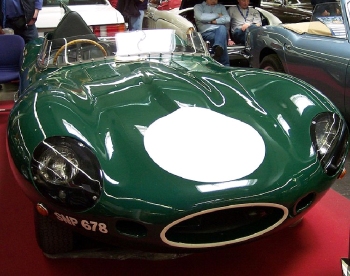 By this time Le Mans was also attracting attention from overseas and, after his first experience the year before with a regular Cadillac and the famous “Le Monstre”, the American challenge of Briggs Cunningham would become a Le Mans feature as well as the pioneer in putting the race in the map for American motorsport. 1952 saw another new winner, this time a German one.
By this time Le Mans was also attracting attention from overseas and, after his first experience the year before with a regular Cadillac and the famous “Le Monstre”, the American challenge of Briggs Cunningham would become a Le Mans feature as well as the pioneer in putting the race in the map for American motorsport. 1952 saw another new winner, this time a German one.
The inequivocal (and massive) presence of Alfred Neubauer in the pits, the collection of technical innovations and huge star signs to indicate where to stop were the clear sign of the presence of Mercedes-Benz at Le Mans. But their “gullwing” 300SL did not have an easy time and the main prize could only be clinched in the last hour by the all-German line-up of Hermann Lang and Fritz Riess who finished just ahead of their team mates Helfrich and Niedermayer. The leading Talbot where Pierre Levegh had driven almost 24 hours on his own gave up with practically minutes to go, possibly due to the driver over-revving the engine. A reversal of fortune so typical of this “gruelling monster” as someone qualified it.
The period 1953-1958 would see a ferocious rivalry between Jaguar and Ferrari which would become the first of many mythical head-to-heads at La Sarthe. The Jaguar C-Type from the works team would win in 53 with Tony Rolt-Duncan Hamilton after a Ferrari debacle that saw all but one of their cars retire or being disqualified. A new regulation was introduced as well allowing a maximum of 80 laps per stint and 18 hours total of driving per driver in order to avoid another “Levegh 1952” situation. But Ferrari would come back in strength in 1954 and the 375 Plus was able to beat both the Aston Martins as the new D-Type Jaguars. Skilled driving from Maurice Trintignant and the only South American winner ever, the Argentinian “Raging Bull of the Pampas” José Froilán González brought the first works victory for the Maranello team. “El Cabezón” González was able to resist the Jaguar pressure during a late rain period and give the Scuderia its maiden works victory at Le Mans as he had done at Silverstone in 1951 in the field of Grand Prix racing.
The catastrophe
The biggest tragedy in racing history would cast a black cloud over the Mike Hawthorn-Ivor Bueb victory for Jaguar in 1955. The infamous flight of Pierre Levegh's Mercedes 300 SLR engine and debris into the main grandstands taking the lives of 80 spectators as well as the driver's has marked Le Mans and motor sport forever and threatened then to stop car racing altogether in Europe (the ban is still valid today in Switzerland). Mercedes retired while Juan Manuel Fangio and Stirling Moss were in the lead in another 300 SLR but the race went on in order to avoid total chaos.
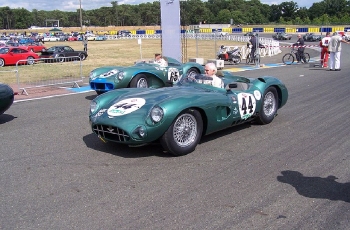 Renewed safety measures and the circuit shortened to 13.461 km incorporating a new section between the main straight and Tertre Rouge saw a big crowd show up for the 1956 race. In the first of two successive victories by the Jaguar D-Types of the Ecurie Ecosse, Ron Flockhart and Ninian Sanderson covered 300 laps of the new layout winning in a close battle from the Aston Martin of Moss and Peter Collins. Flockhart would repeat in 1957, this time with 1955 winner Bueb as partner beating 10 Ferraris and five Maseratis as well as the ever competitive Astons.
Renewed safety measures and the circuit shortened to 13.461 km incorporating a new section between the main straight and Tertre Rouge saw a big crowd show up for the 1956 race. In the first of two successive victories by the Jaguar D-Types of the Ecurie Ecosse, Ron Flockhart and Ninian Sanderson covered 300 laps of the new layout winning in a close battle from the Aston Martin of Moss and Peter Collins. Flockhart would repeat in 1957, this time with 1955 winner Bueb as partner beating 10 Ferraris and five Maseratis as well as the ever competitive Astons.
The Belgian Oliver Gendebien would score the first of his four victories in 1958 driving on a mighty Ferrari 250 Testa Rossa (nicknamed redhead, due to the color of the upper half of the engine block) with American ace Phil Hill. They had a hard time battle the Aston Martins until about noon on Sunday but they won comfortably after a series of rival retirements. The 1950s would end with a DBR1 Aston Martin giving the British team its only overall victory to date, drivers were the American constructor-to-be Carroll Shelby and Roy Salvadori. After 30 years of trying it even was a 1-2 since 2nd place went to driver-journalist Paul Frere and Maurice Trintignant in another Aston. Ferrari succumbed to the “hare and tortoise” tactics from Aston Martin which had sent Moss to drive at a furious pace from the start and forced the Ferraris (and the Moss-Jack Fairman car as well) to retire. The great “uncrowned champion” would never win Le Mans but Sir Stirling Moss is undoubtedly one of the greatest drivers of all times. But 1959 was just a hiccup in the dominance of the Prancing Horse, the 60s would see the small factory from just outside the city of Modena dominate “la grande épreuve” and trigger the fury of a certain Mr. Ford.
The Italian era
If the fifties had been the start of the mythical marque duels at Le Mans, the sixties would propel these duels to an unknown level. The decade would start with a Ferrari victory in 1960. Oliver Gendebien (1958 winner) and Paul Frere (second in 1959) would bring home their beautiful Testarossa, just one of eleven Ferraris entered. Only Aston Martin could show some resistance to this Ferrari swarm with the car driven by Roy Salvadori and none other than Jim Clark arriving third in his best Le Mans finish ever.
It was the time of the Maserati Birdcage, the Austin Healey and so many fast cars but it was the period were Ferrari would prove unbeatable in Le Mans: 6 wins in a row (5 by the Scuderia itself and the last one by the NART) would bring first an offer and then the rage of Ford by the mid-sixties. 1961 saw another Gendebien victory, partnered again by Phil Hill like 3 years before. A clean sweep with a 1-2-3 followed by a Maserati and a Porsche which could have been even more humiliating if a Ferrari vs Ferrari battle between the cars of Ritchie Ginther/Wolfgang von Trips and Pedro/Ricardo Rodríguez would have not taken those two cars out of the race. The following year was almost a copy of 1961, same winners, same Ferrari domination and another 1-2-3 against mild resistance from Maserati and Aston. Fourth victory for Gendebien and third for the Gendebien-Hill pairing in a field with 15 Ferraris entered.
In 1963 an early Maserati lead soon gave way to another Ferrari all-Italian victory with Lorenzo Bandini and Ludovico Scarfiotti putting their 250P on the top of the podium. A curiosity in 1963 was the inclusion “hors-concours” of the turbine Rover-BRM which even managed to finish the race (it would have been a virtual eighth). The Jean Guichet-Nino Vaccarella victory of 1964 made it 5 in a row for Ferrari. However, this year saw the debut of Ford, anxious to grab the top spot from the small Italian constructor. This would be the last year for Jaguar and Aston Martin for decades and it also was a year for the victory in the GT class of Dan gurney/Bob Bondurant in another legendary Le Mans car: Carrol Shelby's AC Cobra. Another 1-2-3 for Ferrari and on to 1964. And another 1-2-3 would materialize when the Ferrari of Jochen Rindt and Masten Gregory would lead another two Maranello cars after a disastrous performance by Ford which saw all their MkIIs abandon the race in just a few hours.
The Ford – Ferrari battle
The Ferrari domination would come to an end in 1966 when the 13 Fords vs 11 Ferraris race ended with a legendary victory by Bruce McLaren/Chris Amon leading a procession of 3 Fords to achieve a 1-2-3 in the closest finish ever in history. The rest of the decade would be a solo of the GT40: 1967 saw the beautiful MkIV take the win in the hands of Dan Gurney/A.J.Foyt in a first ever all American win which also broke the distance record with 5232km run.
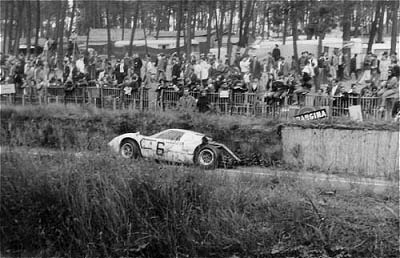 The fantastic P4 Ferraris could only manage second and third in a tough battle with the American monster. But 1968, when the race had to be moved to the end of September due to the social unrest in France, witnessed two important facts: the first was the win of (yet another) Ford GT40 run this time by John Wyer Engineering with Pedro Rodríguez/Lucien Bianchi in Gulf colors, a team/sponsor that would become a symbol of Le Mans. The second fact was that a small German manufacturer that had always raced in small classes started now knocking on the door of the big win: Porsche. Since no works Ferrari was present due to regulations issues the Porsche offensive with their 908 car was even more visible and the Ford could take over only after the 908s showed their mechanical weaknesses, as did another future star: the Matra.
The fantastic P4 Ferraris could only manage second and third in a tough battle with the American monster. But 1968, when the race had to be moved to the end of September due to the social unrest in France, witnessed two important facts: the first was the win of (yet another) Ford GT40 run this time by John Wyer Engineering with Pedro Rodríguez/Lucien Bianchi in Gulf colors, a team/sponsor that would become a symbol of Le Mans. The second fact was that a small German manufacturer that had always raced in small classes started now knocking on the door of the big win: Porsche. Since no works Ferrari was present due to regulations issues the Porsche offensive with their 908 car was even more visible and the Ford could take over only after the 908s showed their mechanical weaknesses, as did another future star: the Matra.
1969 would see the fiercest fight ever with an almost photo-finish between Ford and Porsche. This was the occasion where the Porsche 917 did its first Le Mans appearance and it was both tragic (John Woolfe was killed in a first lap accident) and almost glorious: one 917 came close to winning the race, the Vic Elford/Dick Attwood car retiring with just three hours to go. Three 917s and three 908s had retired and the battle was left to the old 1968 winning Gulf-Ford GT40 (this time with Jacky Ickx/Jackie Oliver behind the wheel) and the sole survivor of the Porsches, the 908 driven by Hans Herrmann/Gerard Larrousse. The 908 and the GT40 exchanged positions constantly and the spectators were treated to an amazing duel that lasted until the very last lap. Ickx thought he had the race on the bag but crossed the line a few seconds before the 4PM clock so a thrilling and unexpected last lap brought Herrmann close to the Ford entering the Hunaudieres straight. A smart move by Ickx simulating he was out of fuel (a known issue in the Ford during the race) had Herrmann take the lead realizing too late that Ickx would use his slipstream to overtake him again at Mulsanne corner and hold the lead by 100 meters at the end of the race…la ronde infernale…
For 1970 a new, short lived age will start. Ford would be gone and the battle of the giants would take place between Porsche and Ferrari with a funny blue car watching right behind.
Battle of the Titans – Ferrari vs. Porsche
1969 was the last year of the Beatles together, the year of Woodstock and the end of the hippie era but it had also been the last year of the Le Mans start. The 1970 edition of the 24 Heures would see many unique happenings: A weird start with the cars in their traditional Le Mans layout but with drivers already in them, a certain Steve McQueen shooting for what would become a classic film among racing fans and the so-called Battle of the Titans between two very powerful cars ending on the first overall victory for Porsche. In fact the duel between the three John Wyer Porsche 917s and the four works Ferrari 512S was never as thrilling as in the film: a multiple crash in the rain would cripple the red team and leave one lonely car that never made it through the night and several issues would have the legendary Gulf-sponsored cars retire leaving the victory to the number 23 Porsche Salzburg 917 of Dick Attwood and Hans Herrmann.
For the first time one make got the win in all classes and all classified Porsches and Ferraris were private teams. The following year would see the fastest lap to date at Le Mans, the longest distance covered at 5335 km and the first rolling start which has been kept until now. The Porsches had again the edge but victory would again escape the Gulf-Wyer team and go rather to the Martini Porsche 917 of Helmut Marko-Gijs van Lennep, for the second time the short-tail 917 K (Kurzheck) would beat the “made for Le Mans” 917 LH (Langheck). Neither the privately entered Ferrari 512Ms nor the Alfa Romeos could beat the pace of the best racing car of the century in its last outing at La Sarthe.
King Henri and the Matras
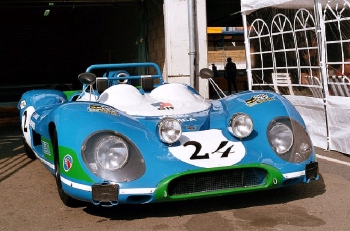 For 1972 rules had changed and the 3-litre engine limit had completely altered the picture, much to the advantage of the small French Matra-Simcas who would become unbeatable emperors of Le Mans, this year with no real challenge as ferrari was absent. This first victory was in the hands of Henri Pescarolo-Graham Hill making the British driver the only man to date to win Indianapolis, the Monaco GP and Le Mans with another Matra completing a neat 1-2 for the blue prototypes. Jo Bonnier was killed in an unfortunate accident leaving endurance racing without one of its main drivers and team owners. With the circuit now modified adding a complete new White House section, the next year would see a well earned Matra victory in an all-out fight with the all-but-Le-Mans conquering Ferrari 312. Henri Pescarolo was again part of the winning team partnered this time by Gérard Larrousse and they would repeat in 1974 even when gearbox failure kept them 47 minutes in the pits and put their lead at stake.
For 1972 rules had changed and the 3-litre engine limit had completely altered the picture, much to the advantage of the small French Matra-Simcas who would become unbeatable emperors of Le Mans, this year with no real challenge as ferrari was absent. This first victory was in the hands of Henri Pescarolo-Graham Hill making the British driver the only man to date to win Indianapolis, the Monaco GP and Le Mans with another Matra completing a neat 1-2 for the blue prototypes. Jo Bonnier was killed in an unfortunate accident leaving endurance racing without one of its main drivers and team owners. With the circuit now modified adding a complete new White House section, the next year would see a well earned Matra victory in an all-out fight with the all-but-Le-Mans conquering Ferrari 312. Henri Pescarolo was again part of the winning team partnered this time by Gérard Larrousse and they would repeat in 1974 even when gearbox failure kept them 47 minutes in the pits and put their lead at stake.
After their third victory in a row Matra would leave Le Mans and 1975 would see some familiar colors return to victory. And it was Gulf sponsored Mirage which would bring a British car back to the top of the podium driven by Jacky Ickx and Derek Bell and a first victory for the DFV Cosworth engine at Le Mans. John Wyer's team met again with victory in a year where the big works teams were absent and other names like Ligier or de Cadenet would continue growing as part of Le Mans history. 1976 would see again familiar faces on the podium when Gijs van Lennep and Jacky Ickx would help return Porsche to the first spot at la Sarthe. The Porsche-Martini team would start a long era of Porsche domination where having another manufacturer winning would certainly become a rare exception. Both the Porsches and their main rivals Alpine-Renault were using turbo engines in which would also be a change for the 24 Hour race. There was also a certain Jean Rondeau introducing a nice prototype called Inaltera…more about him later.
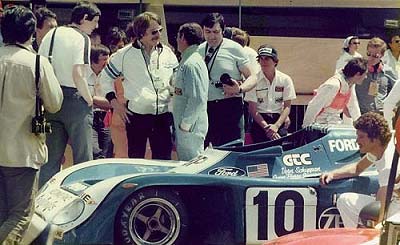 Alpine-Renault came back in 1977 with three cars but none of them would see the finish so victory was assured for the Jacky Ickx-Hurley Haywood-Juergen Barth Porsche when drama would come back to Le Mans in its typical fashion: a piston broke on the leading car with only minutes to go. Given their huge advantage Porsche decided to take a major risk and waited until 15:50 to send Barth back to the track with a crippled car to finish the 24 Hour race almost at walking pace in a very dramatic way. The race ended with a fourth victory for Ickx and a finish for both de Cadenet - now in his own car - and the Inaltera of Jean Rondeau.
Alpine-Renault came back in 1977 with three cars but none of them would see the finish so victory was assured for the Jacky Ickx-Hurley Haywood-Juergen Barth Porsche when drama would come back to Le Mans in its typical fashion: a piston broke on the leading car with only minutes to go. Given their huge advantage Porsche decided to take a major risk and waited until 15:50 to send Barth back to the track with a crippled car to finish the 24 Hour race almost at walking pace in a very dramatic way. The race ended with a fourth victory for Ickx and a finish for both de Cadenet - now in his own car - and the Inaltera of Jean Rondeau.
But there is always a revenge and after their 1977 disaster Alpine-Renault managed to get their win in 1978 with Jean-Pierre Jaussaud and Didier Pironi beating the Porsches fair and square in a race that saw Porsche even change Ickx to a better placed car in a futile attempt to give him his fifth victory. Renault retired from endurance after this victory so 1979 would see Porsche be total favourites with practically no opposition. And while Porsche would effectively win again with Klaus Ludwig and Bill and Don Whittington, the big news was the second placed car since one of the drivers was Paul Newman getting to the podium on his first attempt on the race of races. The 70s would close then like they started: Porsche on top and a Hollywood actor on the spotlight. The 80s would start in a very different fashion, with the first ever constructor-driver to take the honors.
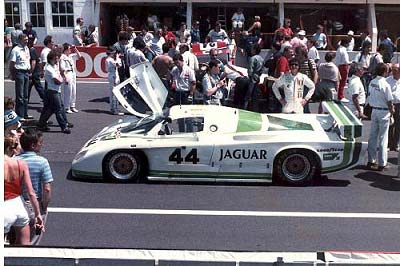 The 70's at the Le Mans 24 Hours ended with a clear Porsche victory. The German manufacturer had seven cars
inside the top 10. Apart from a lonely BMW M1 only one manufacturer was able to get two of its cars in the top 10, namely Rondeau. And for Rondeau finishing fifth was not enough… The Le Mans-built Rondeau was the car to beat in the 48th running of the 24 Hours. The number 15 Rondeau M379 of Henri Pescarolo and Jean Ragnotti had taken pole position, its sister car with Jean-Pierre Jaussaud and constructor/driver Jean Rondeau started from fifth place.
The 70's at the Le Mans 24 Hours ended with a clear Porsche victory. The German manufacturer had seven cars
inside the top 10. Apart from a lonely BMW M1 only one manufacturer was able to get two of its cars in the top 10, namely Rondeau. And for Rondeau finishing fifth was not enough… The Le Mans-built Rondeau was the car to beat in the 48th running of the 24 Hours. The number 15 Rondeau M379 of Henri Pescarolo and Jean Ragnotti had taken pole position, its sister car with Jean-Pierre Jaussaud and constructor/driver Jean Rondeau started from fifth place.
Early on in this very wet race it was the Liqui Moly-Martini Racing Porsche 908/80 of Jacky Ickx and Reinhold Joest that lead the race but lost it when the car suffered a problem. At midnight there was a Rondeau in the lead, but Ickx got the repaired Porsche back on the same lap an hour later. The Porsche increased its lead over the hours to come and had a decent lead at 7 am when it suffered a gearbox failure. Unfortunately for Ickx and Joest the Rondeau did not suffer any problems and while the Porsche was being repaired the Rondeau car of Rondeau/Jaussaud gained the lead. With just 30 minutes to go the rain came back and the Porsche went in for wet tyres in an attempt to finally close the gap and take the win. The Rondeau stayed out and won the race, despite a spin from Jaussaud (who did not hit anything), the first time ever a constructor won the race with his own car.
Porsche dominates
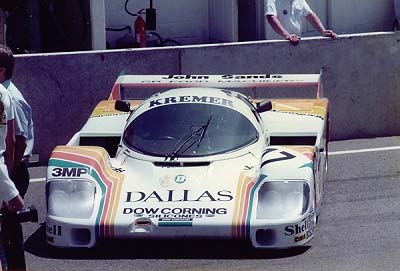 Despite announcing his retirement after Le Mans 1980 Jacky Ickx was back in 1981 with the Porsche 936. The car he shared with Derek Bell was in a league of its own and won the race after completing 354 laps. The Rondeau M379s finished second and third, 14 and 19 laps behind the winner. The 1981 edition however was marred by the death of Jean-Louis Lafosse who crashed his Rondeau on the Hunaudières straight.
Despite announcing his retirement after Le Mans 1980 Jacky Ickx was back in 1981 with the Porsche 936. The car he shared with Derek Bell was in a league of its own and won the race after completing 354 laps. The Rondeau M379s finished second and third, 14 and 19 laps behind the winner. The 1981 edition however was marred by the death of Jean-Louis Lafosse who crashed his Rondeau on the Hunaudières straight.
In 1982 the new FIA Group C rules were introduced and while privateer teams were unhappy with these new rules, the manufacturers did support them. Porsche built a new car to replace its successful 936 and the Porsche 956 was the result. The car was unbeatable and the number 1 Rothmans Porsche 956 in the hands of Jacky Ickx and Derek Bell won the 50th edition of the 24 Hours. Two other Porsche 956 cars completed a Porsche 1-2-3. The success of the Porsche 956 in 1982 meant Porsche could sell several customer cars to privateer teams like Kremer Racing and Joest Racing. With all these teams competing at Le Mans the 1983 race turned into a Porsche parade. Eleven Porsche 956s took part in the race and nine of them finished in the top 10. Vern Schuppan, Hurley Haywood and Al Holbert won the race, just beating their team mates Jacky Ickx and Derek Bell.
Lancia responded to the 956 with its LC2 but despite running well in qualifying the cars did not finish. The 1984 race was won by the Joest Racing entered Porsche 956 of Henri Pescarolo and Klaus Ludwig. They won in the absence of the Porsche factory teams, which disagreed with the new 1984 rules and therefore boycotted the race. Despite the factory teams not being there, there were still eight 956s in the top 10 at the end of the 52nd Le Mans 24 Hours. Once again Lancia tried to win Le Mans, but even though they claimed the front row for the race it was once again a Porsche on top at the end of the race.
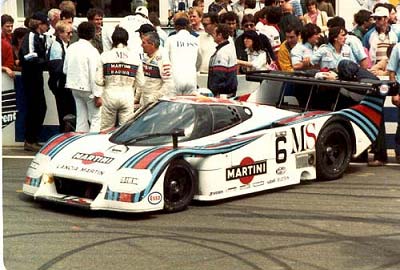 With a revised 956, being named the Porsche 962C, the Weisenbach-based manufacturer returned to Le Mans in 1985. This car, that was eligible under the new IMSA rules, was not able to beat the ‘old’ 956s however and Derek Bell/Hans-Joachim Stuck only finished third overall. The race was once again won by the Joest Racing team, the number 7 Porsche 956 driven by Klaus Ludwig, Paolo Barilla and “John Winter”. Winter was in fact a pseudonym for Louis Krages, a German who used this name to prevent his family from finding out he was racing.
With a revised 956, being named the Porsche 962C, the Weisenbach-based manufacturer returned to Le Mans in 1985. This car, that was eligible under the new IMSA rules, was not able to beat the ‘old’ 956s however and Derek Bell/Hans-Joachim Stuck only finished third overall. The race was once again won by the Joest Racing team, the number 7 Porsche 956 driven by Klaus Ludwig, Paolo Barilla and “John Winter”. Winter was in fact a pseudonym for Louis Krages, a German who used this name to prevent his family from finding out he was racing.
A year later, in 1986, no one was able to catch the works Porsche 962C of Stuck/Bell/Holbert. The number one car finished the race after 367 laps, beating several other Porsches. Unfortunately the 962C win was overshadowed by the death of Austrian Formula One and sports car driver Jo Gartner. During the night, just after 2 am, Gartner’s Porsche suddenly made a hard left turn on the Mulsanne straight after suffering a (suspected) jammed gearbox. The car hit the barriers at nearly 290 km/h, became airborne and rolled down the track until it came to a rest on the right side barrier and caught fire. Jo Gartner was killed instantly.
In between the 1986 and 1987 editions of the 24 Hours of Le Mans the track underwent some reconstruction at the Dunlop Bridge. A chicane was put in place at the Dunlop Curve as the ACO tried to slow down the cars around the track. Stuck/Bell/Holbert repeated their 1986 win by scoring yet another Porsche victory at Le Mans in 1987. The Porsche-powered Cougar C20 of Yves Courage/Pierre-Henri Raphanel and Hervé Regout finishes third making it the first time in years that there is a non-Porsche chassis on the podium.
 The Porsche winning streak came to a halt during the 56th running of the 24 Hours in 1988. After four previous attempts with the XJR it was the latest evolution, the XJR-9, of Tom Walkinshaw Racing (TWR) that finally managed to dethrone Porsche. The number 2 Silk Cut Jaguar, driven by Jan Lammers, Johnny Dumfries and Andy Wallace, finished just over 2.5 minutes ahead of the Porsche 962C driven by Stuck/Ludwig/Bell. Apart from another Jaguar in fourth place the rest of the top 10 was taken by Porsche 962Cs however. The WM P87 reached a speed of 405 km/h early in the race, before breaking down, a sign that the attempts to slow the cars had failed.
The Porsche winning streak came to a halt during the 56th running of the 24 Hours in 1988. After four previous attempts with the XJR it was the latest evolution, the XJR-9, of Tom Walkinshaw Racing (TWR) that finally managed to dethrone Porsche. The number 2 Silk Cut Jaguar, driven by Jan Lammers, Johnny Dumfries and Andy Wallace, finished just over 2.5 minutes ahead of the Porsche 962C driven by Stuck/Ludwig/Bell. Apart from another Jaguar in fourth place the rest of the top 10 was taken by Porsche 962Cs however. The WM P87 reached a speed of 405 km/h early in the race, before breaking down, a sign that the attempts to slow the cars had failed.
In the final race of the eighties at Le Mans Jaguar was hoping for a repeat of their 1988 victory, but there was one other team that spoiled it for the British squad. Swiss constructor Peter Sauber, who had been running cars at Le Mans for more than a decade, and Mercedes-Benz became partners and Sauber’s Team became the official Mercedes-Benz factory team. The Sauber C9 with its 5 litre Turbo V8 dominated the 1989 event. The number 62 Sauber C9 of Schlesser/Jabouille/Cudini took pole position and eventually finished fifth. Its sister cars went on to make it a one-two finish for Team Sauber Mercedes. Jochen Mass, Manuel Reuter and Stanley Dickens in the 63 car won after completing 389 laps. The number 61 of Baldi, Acheson and Brancatelli followed, albeit five laps down. All three cars were capable of reaching speeds up to 400 km/h. The winning Jaguar of 1988 was down in fourth place and seemed to have been tamed… The 90’s would bring a lot more diversity in race winners and of course a new track layout.
The end of the Hunaudieres
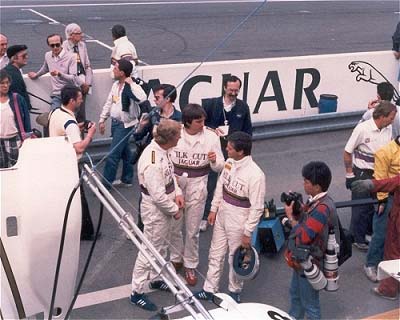 The domination by the Porsche 962C and its predecessor the 956 in the 80’s meant other manufacturers had to improve their cars and get higher speeds out of those cars to be able to win again. In the 1988 and 1989 races at the Circuit de la Sarthe speeds in excess of 400 km/h were measured and the FISA decided it was time to stop the fun. As a result of the intervention by the autosport federation two chicanes were placed in the Mulsanne Straight and when the 1990 race took place the drivers had three shorter Mulsanne Straights to tackle, rather than one long.
The domination by the Porsche 962C and its predecessor the 956 in the 80’s meant other manufacturers had to improve their cars and get higher speeds out of those cars to be able to win again. In the 1988 and 1989 races at the Circuit de la Sarthe speeds in excess of 400 km/h were measured and the FISA decided it was time to stop the fun. As a result of the intervention by the autosport federation two chicanes were placed in the Mulsanne Straight and when the 1990 race took place the drivers had three shorter Mulsanne Straights to tackle, rather than one long.
After winning the 1989 race Sauber decided not to return to Le Mans in 1990. The TWR Jaguar team did return to France with an all new XJR-12. Their major opponents were the works Nissan R90CKs as well as numerous Porsche 962Cs. Nissan took the pole position and fastest lap in the race, but the R90CKs did not last the full 24 hours. At the end of the day the Silk Cut Jaguars took a one-two finish again, with John Nielsen/Price Cobb/Martin Brundle beating everyone to take the victory. The renovation of Le Mans continued into 1991. A new pit complex, with modern boxes, pit stalls and suites was completed in the year between the races.
Out on the track a new World Sportscar Championship rule caused an upset. The new rules meant cars would be 750kg with 3.5L normally aspirated engines. TWR-Jaguar, Sauber-Mercedes and Peugeot built these cars, but nobody else did and the there were not enough cars to fill the grid. The FIA reserved the top 10 of the grid for the new cars and invited older Group C cars to fill up the grid. The result was that the Group C cars were more reliable and quicker than the new cars and TWR and Sauber withdrew their new cars and raced with the old ones.
However this was not enough to beat the Oreca-Mazdaspeed Mazda 787B. The Japanese manufacturer had overcome the problems that troubled the Mazda 787 and with Volker Weidler, Johnny Herbert and Bertrand Gachot behind the wheel of the number 55 car they took the first ever Japanese victory at Le Mans, as well as the first ever non-piston engine car to win.
Despite the problems with the new rules in 1991 the FIA did not change the regulations in 1992 and the 3.5L rules ushered in a new era of sportscar racing. Peugeot, the only manufacturer that ran the ’91 event with a 3.5L car, returned to Le Mans with the Peugeot 905 Evo 1B and took on the Japanese opposition from Toyota and Mazda. The number 1 Peugeot Talbot Sport entry driven by Derek Warwick/Yannick Dalmas/Mark Blundell was the first ‘3.5L’ car to win Le Mans, beating the Toyota TS010 and the number 2 Peugeot 905. For the 1993 race the ACO made the decision to allow GT cars back in the race for the first time since Group C was created. As a result many Porsche 911s and Venturi 500LMs were entered. The GT category in 1993 was won by Larbre Competition, putting their 2 Porsches in first and second.
The World Sportscar Championship collapsed before the 1993 season started and Peugeot and Mercedes focussed on F1 projects. Peugeot did return to Le Mans however, with the 905 Evo 1B. Eric Hélary/Christophe Bouchut/Geoff Brabham gave Peugeot a back-to-back victory, the two other Peugeots finishing second and third. Toyota Team Tom’s was the best of the rest. Following this dominant performance, Peugeot pulled out of sports car racing. With new IMSA regulations coming into place to lower the costs the 3.5L cars were no longer eligible to race in 1994.
New cars had to be open-top, flat-bottomed sports-prototypes with production engines. The so-called LMP1 cars were not able to fight for victory though as Porsche exploited a loophole in the GT rules. Two street-legal versions of the Porsche 962 were built and modified to fit into the GT category. Jochen Dauer ran the so-called Dauer 962 cars, with Porsche support, and finished first and third. Toyota ran a couple of Group C Toyota 94C-Vs and finished second and fourth. The first real ‘WSC’ car (LMP1) to finish was the Kremer K8 Spyder, 18 laps behind the winning 962 in sixth.
The 63rd 24 Hours of Le Mans only saw proper GT and WSC cars on the track. Entries like the Dauer 962 and and dusted-off Group C cars were not allowed. The Le Mans Prototype WM’s of Welter Racing took pole position and set the fastest lap time in the race but suffered mechanical problems and retired. The McLaren F1 GTR, which was in its first racing season, turned out to be the most reliable car around the track, as it had already shown in the ’95 BPR Global GT Series, and beat the Courage C34. Yannick Dalmas/Masanori Sekiya/JJ Lehto completed 298 laps, one more than the Courage. The McLaren F1 GTR took the remaining top 5 spots. Porsche responded to the McLaren F1 GTR in 1996 by entering two Porsche 911 GT1s and intended to win the race overall, defeating the McLarens and the LMPs. They succeeded in beating the McLarens, but missed out on the overall victory as Joest Racing entered a prototype for Davy Jones/Alexander Wurz/Manuel Reuter that won the race. This car was built around a TWR Jaguar XJR-14, modified to fit into the LMP regulations and, ironically, fitted with a Porsche engine. At the end of the day Porsche won Le Mans, but not with the cars they wanted it to win with.
The 1997 race saw the same outcome as the 1996 race. The Joest Racing Porsche WSC-95 was not the fastest car out on the track, but mechanical problems for the Porsche 911 GT1s and McLaren F1 GTRs meant Joest Racing claimed his second ever back-to-back Le Mans victory with the same chassis. The drivers of this car were Michele Alboreto, Stefan Johansson and Le Mans rookie Tom Kristensen. In June 1998 the number of manufacturers officially involved in the 24 Hours of Le Mans saw a significant increase. Porsche upgraded its 911 GT1, BMW entered its new BMW V12 LM in cooperation with the Williams F1 team, Nissan sent 4 new R390 GT1s, Mercedes was involved with the CLK-GTR LM and the American Panoz team send two Esperante GTR-1s. The race became a war of attrition that was won by Porsche. The cars from Mercedes, BMW and Toyota retired with mechanical problems or accident damage, while the Nissan R390 GT1s and McLaren F1 GTRs did not have the pace to keep up with the Porsche 911 GT1-98s. Laurent Aiello, Allan McNish and Stephane Ortelli in the number 26 Porsche gave the German manufacturer the Le Mans victory it wanted and the number 25 Porsche made it even better after taking second place. Porsche announced they would not return to Le Mans in 1999, taking a sabbatical instead…
For the 1999 season the rules changed again. GT1 had come to an end and was replaced by the LM GTP category for GT prototypes. Despite Porsche not being at the race, the number of manufacturers involved did not drop. Toyota entered three GT-One cars, Mercedes three new CLR LM GTPs, while Nissan and Panoz moved to the open cockpit LMP class. Newcomer for the 1999 race was Audi. They decided to race in both classes and ran two open cockpit R8R’s in the LMP category and two closed cockpit R8Cs in the LM GTP. BMW entered their new V12 LMR. The 1999 event became famous for the Mercedes incidents during qualifying and race. A flaw in the CLR design caused the car to become airborne. During qualifying and warm-up Mark Webber was driving the car when it lifted off. His car was withdrawn, the other two cars continued. Unfortunately for Mercedes a few hours into the race it was Peter Dumbreck who suffered the same problem. The Scot went into the air, over the barriers and landed in the trees. The whole accident was caught by the cameras and broadcast live on TV. Mercedes instantly withdrew the remaining car and withdrew from sportscar racing again. The race itself was won by Winkelhock, Martini and Dalmas in the Team BMW Motorsport BMW V12 LMR, ahead of the Toyota GT-One and the brand new Audi R8R. With another Audi Sport Team Joest R8R finishing in fourth place it looked like Audi had the right package to go for the win at Le Mans in the future.
The new millennium – Audi
In 2000 three Audi R8’s were entered and the R8 turned out to be an instant winner. During qualifying the number 9 R8 of Aiello, McNish and Ortelli took the pole position, the other Audi’s were second and third on the grid. At the end of the 2000 Le Mans 24 Hours the same three cars were on top, albeit in a different order. Frank Biela, Tom Kristensen and Emanuele Pirro beat the sister cars to clinch the R8s first Le Mans victory.
In 2001 the Mulsanne straight was once again changed, the large hill on the last part of the straight was lowered in order to prevent accidents like the Mercedes-Benz CLRs becoming airborne in 1999. The race itself saw a famous name making its return to the French circuit. British manufacturer Bentley, like Audi owned by the Volkswagen Group, entered a Bentley EXP Speed 8 to challenge the German Audi R8. The race was hampered by heavy rain throughout the race but even the huge amounts of water could not stop Audi. The number 1 Audi of Biela/Pirro/Kristensen won again, 1 lap ahead of the number 2 Audi and 15 laps ahead of the Bentley. The 2002 race was driven on yet another Le Mans circuit layout as the track was changed between the Dunlop bridge and the Esses. Once a straight it had now been turned into a set of fast turns leading to Tertre Rouge. Under much better weather conditions than in 2001 Bentley and Audi took on each other again and just like the previous years it was Audi that prevailed. With this result Audi Sport Team Joest and its drivers Biela, Pirro and Kristensen took their third consecutive victory as a team and manufacturer. It was the first time the same three drivers won the event three times in a row.
With the success of winning three times in a row Audi did not field a works team in 2003, but privateers like Champion Racing, Team Goh and Audi Sport UK did enter the R8 though. However it was Bentley that won the race, its first victory at Le Mans since 1930. The Bentley team was supported by Audi factory squad Joest Racing and Audi had put its drivers Rinaldo Capello and Tom Kristensen in the winning car, joined by Briton Guy Smith. For Tom Kristensen it was his fourth consecutive victory, a new record. After taking the win Bentley withdrew from Le Mans again which meant there were no official works entries for the 2004 edition of the race. Nevertheless several privateer teams returned to the track with an R8 and the car showed its capabilities by scoring a 1-2-3 finish. The winning R8 of Audi Sport Japan Team Goh had a couple of familiar names in its line-up, next to Japanese Seiji Ara Audi works drivers Rinaldo Capello and Tom Kristensen were in the car. For Kristensen it was his fifth straight victory at Le Mans and his sixth overall, he was now on the same level as Jacky Ickx. The Le Mans-based Pescarolo squad entered its own Pescarolo C60 to compete against the Audi’s and finished fourth, preventing an Audi top 4.
The 2005 edition was driven in exceptionally hot weather. The temperature was well over 30ºC and caused a lot of mechanical problems for the teams. The Pescarolo Sport C60 of Collard/Boullion/Comas had taken pole position and with French rally ace Sébastien Loeb behind the wheel of the second Pescarolo the French fans all came to Le Mans hoping for a French victory for the first time since Peugeot in 1993. Unfortunately for them the Pescarolo cars had a lot of bad luck during the race and despite the lower speed of the car the reliability of the Audi R8 was the key factor. The Champion Racing R8 in the hands of Lehto, Werner and (again) Kristensen won the race, 2 laps ahead of the number 16 Pescarolo. Kristensen set a new record of seven overall Le Mans victories, six of them in succession. He was now one win ahead of Le Mans legend Jacky Ickx.
Diesel power
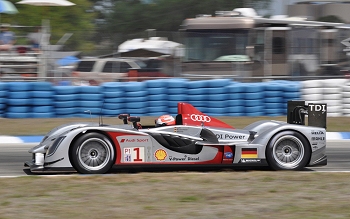 Before the 2006 event started the ACO changed the Dunlop Curve and Dunlop Chicane area again and extended the pit lane, as requested by the FIA. After receiving many complaints about the longer and slower pitlane during the Le Mans test day the ACO decided to use the old pit exit for the race. Audi Sport Team Joest returned to Le Mans as the official Audi works team with the diesel-powered R10 that had replaced the legendary R8. The car showed it was able to carry on where the R8 had left and it was the number 7 Audi R10 of Kristensen/McNish/Capello that took pole position for the 74th Le Mans 24 Hours. However the number 7 turned out to be less reliable as its sister car. While the number 8 of Biela/Werner/Pirro won the race, ending the winning streak of Tom Kristensen, it was the Pescarolo C60 Hybrid of Loeb/Hélary/Montangy that took second place ahead of the second Audi R10. Kristensen did not improve his record, but Audi did rewrite motorsport history as the R10 became the first ever diesel-powered sports car to win Le Mans.
Before the 2006 event started the ACO changed the Dunlop Curve and Dunlop Chicane area again and extended the pit lane, as requested by the FIA. After receiving many complaints about the longer and slower pitlane during the Le Mans test day the ACO decided to use the old pit exit for the race. Audi Sport Team Joest returned to Le Mans as the official Audi works team with the diesel-powered R10 that had replaced the legendary R8. The car showed it was able to carry on where the R8 had left and it was the number 7 Audi R10 of Kristensen/McNish/Capello that took pole position for the 74th Le Mans 24 Hours. However the number 7 turned out to be less reliable as its sister car. While the number 8 of Biela/Werner/Pirro won the race, ending the winning streak of Tom Kristensen, it was the Pescarolo C60 Hybrid of Loeb/Hélary/Montangy that took second place ahead of the second Audi R10. Kristensen did not improve his record, but Audi did rewrite motorsport history as the R10 became the first ever diesel-powered sports car to win Le Mans.
The return of Peugeot to Le Mans in 2007 with a Diesel powered sports car prototype coupé was the beginning of a battle of a series of 24 hour battles. In 2007 and 2008 Audi won again with the R10, although Peugeot had the much quicker car in 2008 they were defeated by their own pit stop strategy. For 2009 Aston Martin joined the battle – hoping in vain that changes of the regulations would equalize their petrol-powered engine with the diesel powered entries. Audi presented with their new R15 that proved not to be sufficiently race ready and Peugeot 908s duly took top honours.
2010 saw the renewal of the 2009 battle. Peugeot dominated the 12 hour season opener in Sebring and laid down the gauntlet to Audi. Come June Peugeot were odds on favourites to take the win at Le Mans and on race day four Peugeot 908's lined up against 3 Audi R15's. An assortment of petrol powered cars including Lolas, Zyteks, Orecas and the Prodrive Aston Martin were also entered but it was clear they still lagged behind the Diesels on pace.
The 3 factory 908's made good starts from the green flag and such was the pace of the leading trio of factory Peugeots they pulled out a lead of about one minute in the first hour. McNish was in the first of the Audis in 4th place having passed the privately run Oreca 908. But at about 7pm the lead Audi went for a trip in the gravel at a cost of 3 laps. The Peugeots could now ease the pace, something they looked very keen to do.
The damage to Peugeots reliability seemed to have already been done with all 3 factory 908s and the privately run Peugeot 908 eventually retiring throughout Sunday (one suspension failure and three engine failures). En route to failure and as the situation became increasingly desperate the No.64 Corvette was sent into the barriers by the exuberant Davidson further adding to the embarrassment. Audi locked at the podium with a 1, 2, 3 finish for the Joest team. The petrol engined LMP1 race was won by Oreca and LMP2 was won by the Strakka racing Honda. It was fitting that the last LMGT1 race was won by a stalwart of the GT1 series the Saleen SR7, with GT2 glory going to the Felbermayr Porsche.
2011 - Peugeot vs. Audi - 13.8 seconds
In the 79th running of the Le Mans 24 hour race the Audi vs. Peugeot rivalry was reignited again and was the focus of the majority visiting La Sarthe that weekend. The Sebring 12 hour earlier in the year hinted that the Peugeots had the upper hand but Le Mans very rarely follows the form book.
For the first time since 2006 Audi took the top spot in qualifying with the Joest team setting a faster lap time than the much larger capacity previous evolutions of the Audi. Signatech Nissan qualified first in LMP2 and the newly created LM GTE Pro and Am categories were headed by the factory BMW team M3 and AF Corse Ferrari 458 respectively. As in 2010 the race started with 4 Peugeots taking on 3 Audis in the feature LMP1 race with all 7 mixed up in the top 7 slots. Even before the first lap was completed both teams were aware of the ability of the Peugeot to run one lap longer on a tank of fuel than the Audi. Over the course of the 24 hours this could crucially mean 2-3 less stops for the Peugeot team with respect to the legendary efficiency in the pits of the Audi team.
Within the first hour the first major incident of the race took place. Allan McNish exited the pits and thought he had an opportunity to dive past one of his team-mates just after the Dunlop bridge. Unfortunately the No.58 Ferrari was lurking on the other side of the Audi, unsighted by McNish, who collected the Ferrari on his trip to the gravel. The Ferrari was relatively unscathed and re-joined the race but McNish was sent flying into the catch fencing before finishing up on his roof. The car was destroyed and the crowd held its breath and then released a collective sigh of relief as McNish opened the door and walked away. A spectacular accident that 20 years ago may have had a much sadder ending. The safety car came out whilst the crash barriers were repaired and due to the length enabled the Audis to make back one of their pit stop deficits whilst retaining the lead.
8 hours later and the crowd were stunned by a copycat incident involveing the No.1 Audi (driven by Mike Rockenfeller) at the time and the No.71 Ferrari. In the dead of night Rockenfeller appeared to misjudge the routine pass between the Mulsanne and Indianapolis corners. He careered off the track and smashed into the barriers, the video footage showing the Audi disintegrating into thousands of pieces. Again the pilote was able to walk away much to the credit of the safety technology of the modern race car. The resulting safety car came out for over 2 hours whilst the barriers were repaired, an indication of the massive forces in the shunt. The length of this safety car resulted in a Le Mans first where a replacement safety car was deployed as the first one ran low on fuel.
As the morning broke the remaining leading Audi and Peugeot pack were close together with the staggered fuel stops causing the lead to change on several occasions. The teams began work on a finish strategy to ensure they wouldn’t be pitting with only a couple of laps to go. Spectator calculations seemed to think that in this case the Peugeot No.7 would benefit and take the win but Alex Wurz through a curve ball, hitting the barrier at Indianapolis and dropping back 3 laps. This epitomised the closing hours of what many are saying is the best end to a race in a long time. Audi had worked their pit stops to give themselves back the advantage but a fuel tank issue meant they couldn’t use the full 65litre capacity and an unscheduled stop was forced. At the final stop Lotterer in the No.2 Audi took the time to put on new tyres as well as fuel. Paganuad in the No.9 Peugeot only added fuel and both he and Lotterer emerged from the pits seconds apart with the Audi ahead. The tyres paid dividends as both cars hammered round the track in a desperate sprint to the finish line with Lotterer’s Audi pulling clear by only 13.8 seconds from Pagenaud’s Peugeot to take the victory with the final lap at full race speed as opposed to the usual processional luxury afforded to the leader. This marked Audi’s tenth win at Le Sarthe and moves them clear into second of all time wins from Ferrari on 9 and behind Porsche on 16.
A dramatic end to the GTE Pro race saw the AF Corse Ferrari narrowly missing out on the class victory to the Corvette Racing C6 despite finishing on the same lap. Corvette wrapped up a successful 24 hours by wining the GTE Am class.
2012-15 WEC - a new era
2012 saw the dawn of a new era in Le Mans history in more ways than one. The FIA World Endurance Championship came in as the new international series of endurance racing, featuring Le Mans as the headline event (but also featuring 6- and 12- hour races at tracks including Spa-Francorchamps and Silverstone), while a new rivalry between Audi and Toyota saw the first Le Mans victory for a hybrid car (after Audi had come with both hybrid and non-hybrid entries). In the top category of LMP1, the new hybrid rivalry between Audi and Toyota (and, from 2014, Porsche), continued over the next few years- while the FIA continued (and continues) to refine regulations to allow the maximum amounts of creativity and innovation.
2012 saw the debut of Toyota as LMP1 competitors, attempting to challenge the supremacy of Audi, but failing on their first attempt as Audi took the top three positions (with Rebellion Racing ahead of the fourth Audi, which had suffered an accident), while both of the Toyotas were unable to finish due to accidents. The top runners in GTE Pro and Am remained fairly close, so the class victory of AF Corse Ferrari was only four laps ahead of the 3rd placed Aston Martin, which itself finished only three laps ahead of the Labre Competition Chevrolet Corvette which won in the Am category, all proving that the GTE racing remained something worth watching.
The 2013 race was sadly overshadowed by the tragic death of Allan Simonsen, the popular GT driver who had been racing in an Aston Martin. Also noteworthy was five hours spent under the safety car, dismal rainy conditions and the possibility of Audi being defeated by Toyota; possibly aided by the weather, various accidents and safety cars, the Toyota seized second place, only one lap behind the winning Audi, and were able to secure fourth place as well, despite an accident. Meanwhile, only one lap ahead of an Aston Martin, Porsche took first and second in GTE Pro upon their return to Le Mans, ahead of their re-entry into the top class the following year.
It was in 2014 that Toyota came closest to victory (to date), against the ever-strong Audis and Porsche’s first attempt at overall victory since 1998. With their outright speed, Toyota seemed destined to win (and even Porsche seemed in with a chance at times), but once again, Audi was dominant, taking the top two podium positions ahead of Toyota, who ultimately only managed third, despite frequently being fastest. The GTE race was close again, ending with a single lap between the winning AF Corse Ferrari and the second place Corvette, and a staggering twelve cars finishing within twelve laps of the winning GTE. Overall, this was a race that could certainly be regarded as a “classic”.
It is the freedom of engineering that has come to define the modern era of Le Mans racing. Perhaps the greatest example of this is the entry of Nissan into LMP1 in 2015. After its short-lived 2014 Deltawing Garage 56 entry (the garage itself intended as a hub for innovation at Le Mans), Nissan entered into the top category in the following year. The design of the car was unique, with an almost unprecedented front engine, standing as perhaps the most ambitious attempt to optimise performance over the last few years- although in engineering terms, the 2015 entries by Audi, Toyota and Porsche were a world away from each other, each trying to find different methods of utilising the equally ambitious contemporary ACO rulebook. This ultimately resulted in a 2014 Toyota win in the WEC and a 2015 Le Mans race (and WEC) victory for Porsche (the first non-Audi Le Mans win since 2009).
It was in 2015 that Audi were finally beaten for the first time since 2009, but this was not by Toyota- it was Porsche that narrowly took victory (and second place) ahead of Audi, who were 2 laps behind the pace (and Toyota, at 8 laps behind the pace). The racing between Audi and Porsche had been close throughout, but Porsche managed to remain ahead for a number of hours until the end without major mishaps. The GTE-winning Corvette finished five laps ahead of the car second placed in GTE (SMP Ferrari), which, unusually, sat in the Am category! All proving that, even today, Le Mans is as unpredictable and exciting as ever…
Overall winners since 1923
| Year | Car | Drivers | Distance |
|---|---|---|---|
| 1923 | Chenard & Walcker | André Lagaché (F), René Leonard (F) | 2209 |
| 1924 | Bentley 3-Litre | John Duff (GB), Francis Clement (GB) | 2077 |
| 1925 | La Lorraine | Gérard De Courcelles (F), André Rossignol (F) | 2233 |
| 1926 | La Lorraine | Robert Bloch (F), André Rossignol (F) | 2552 |
| 1927 | Bentley 3-Litre | Dudley Benjafield (GB), Sammy Davis (GB) | 2369 |
| 1928 | Bentley 4.5 | Woolf Barnato (GB), Bernard Rubin (GB) | 2669 |
| 1929 | Bentley Speed Six | Woolf Barnato (GB), Sir Henry Birkin (GB) | 2843 |
| 1930 | Bentley Speed Six | Woolf Barnato (GB), Glen Kidston (GB) | 2930 |
| 1931 | Alfa Romeo 8C-2300sc | Earl Howe (GB), Sir Henry Birkin (GB) | 3017 |
| 1932 | Alfa Romeo 8C-2300sc | Raymond Sommer (F), Luigi Chinetti (I) | 2954 |
| 1933 | Alfa Romeo 8C-2300sc | Raymond Sommer (F), Tazio Nuvolari (I) | 3144 |
| 1934 | Alfa Romeo 8C-2300sc | Luigi Chinetti (I), Phillipe Etancelin (F) | 2886 |
| 1935 | Lagonda M45R | J.S. Hindmarsh (GB), Louis Fontes (RA) | 3006 |
| 1936 | Race was cancelled | ||
| 1937 | Bugatti S7Gsc | Jean-Pierre Wimile (F), Robert Benoist (F) | 3287 |
| 1938 | Delhaye 135M | Eugène Chaboud (F), Jean Tremoulet (F) | 3180 |
| 1939 | Bugatti S7Gsc | Jean-Pierre Wimile (F), Pierre Veyron (F) | 3354 |
| 1940-1948 | Races were cancelled | ||
| 1949 | Ferrari 166MM | Luigi Chinetti (USA), Lord Selsdon (GB) | 3178 |
| 1950 | Talbot-Lago | Louis Rosier (F), Jean-Louis Rosier (F) | 3465 |
| 1951 | Jaguar C-Type | Peter Walker (GB), Peter Whitehead (GB) | 3611 |
| 1952 | Mercedes-Benz 300SL | Hermann Lang (D), Fritz Reiss (D) | 3733 |
| 1953 | Jaguar C-Type | Tony Rolt (GB), Duncan Hamilton (GB) | 4088 |
| 1954 | Ferrari 375 | Juan Froilan Gonzales (RA), Maurice Trintignant (F) | 4061 |
| 1955 | Jaguar D-Type | Mike Hawthorn (GB), Ivor Bueb (GB) | 4135 |
| 1956 | Jaguar D-Type | Ron Flockhart (GB), Ninian Sanderson (GB) | 4034 |
| 1957 | Jaguar D-Type | Ron Flockhart (GB), Ivor Bueb (GB) | 4397 |
| 1958 | Ferrari 250TR58 | Olivier Gendebien (B), Phil Hill (USA) | 4101 |
| 1959 | Aston Martin DBR1 | Caroll Shelby (USA), Roy Salvadori (GB) | 4347 |
| 1960 | Ferrari 250TR59/60 | Olivier Gendebien (B), Paul Frère (B) | 4217 |
| 1961 | Ferrari 250TR61 | Olivier Gendebien (B), Phil Hill (USA) | 4476 |
| 1962 | Ferrari 250P | Olivier Gendebien (B), Phil Hill (USA) | 4451 |
| 1963 | Ferrari 250P | Ludovico Scarfiotti (I), Lorenzo Bandini (I) | 4561 |
| 1964 | Ferrari 275P | Jean Guichet (F), Nino Vaccarella (I) | 4695 |
| 1965 | Ferrari 250LM | Jochen Rindt (A), Masten Gregory (USA) | 4677 |
| 1966 | Ford GT40 Mk II | Chris Amon (NZ), Bruce McLaren (NZ) | 4843 |
| 1967 | Ford GT40 Mk IV | Dan Gurney (USA), A.J. Foyt (USA) | 5232 |
| 1968 | Ford GT40 | PedroRodriguez (MX), Lucien Bianchi (B) | 4452 |
| 1969 | Ford GT40 | Jacky Ickx (B), Jackie Oliver (GB) | 4997 |
| 1970 | Porsche 917 | Hans Hermann (D), Richard Attwood (GB) | 4607 |
| 1971 | Porsche 917 | Helmut Marko (A), Gijs van Lennep (NL) | 5335 |
| 1972 | Matra-Simca MS670 | Henri Pescarolo (F), Graham Hill (GB) | 4691 |
| 1973 | Matra-Simca MS670B | Henri Pescarolo (F), Gérard Larousse (F) | 4853 |
| 1974 | Matra-Simca MS670B | Henri Pescarolo (F), Gérard Larousse (F) | 4606 |
| 1975 | Mirage-Ford M8 | Jacky Ickx (B), Derek Bell (GB) | 4594 |
| 1976 | Porsche 936 | Jacky Ickx (B), Gijs van Lennep (NL) | 4769 |
| 1977 | Porsche 936 | Jacky Ickx (B), Jurgen Barth (D), Hurley Haywood (USA) | 4671 |
| 1978 | Renault-Alpine A442 | Jean-Pierre Jaussaud (F), Didier Pironi (F) | 5044 |
| 1979 | Porsche 935 | Klaus Ludwig (D), Bill Whittington (USA), Don Whittington (USA) | 4173 |
| 1980 | Rondeau-Ford M379B | Jean-Pierre Jausxaud (F), Jean Rondeau (F) | 4608 |
| 1981 | Porsche 936-81 | Jacky Ickx (B), Derek Bell (GB) | 4825 |
| 1982 | Porsche 956-82 | Jacky Ickx (B), Derek Bell (GB) | 4899 |
| 1983 | Porsche 956-83 | Vern Schuppan (AUS), Hurley Haywood (USA), Al Holbert (USA) | 5047 |
| 1984 | Porsche 956B | Klaus Ludwig (D), Henri Pescarolo (F) | 4900 |
| 1985 | Porsche 956B | Klaus Ludwig (D), Paolo Barilla (I), “John Winter” (D) | 5088 |
| 1986 | Porsche 962C | Derek Bell (GB), Hans Stuck (D), Al Holbert (USA) | 4972 |
| 1987 | Porsche 962C | Derek Bell (GB), Hans Stuck (D), Al Holbert (USA) | 4971 |
| 1988 | Jaguar XJR-9LM | Johnny Dumfries (GB), Jan Lammers (NL), Andy Wallace (GB) | 5332 |
| 1989 | Sauber-Mercedes C9 | Jochen Mass (D), Stanley Dickens (S), Manuel Reuter (D) | 5265 |
| 1990 | Jaguar XJR-12 | Martin Brundle (GB), John Nielsen (DK), Price Cobb (USA) | 4882 |
| 1991 | Mazda 787B | Johnny Herbert (GB), Bertrand Gachot (B), Volker Weidler (D) | 4922 |
| 1992 | Peugeot 905 | Derek Warwick (GB), Yannick Dalmas (F), Mark Blundell (GB) | 4787 |
| 1993 | Peugeot 905B | Geoff Brabham (AUS), Eric Helary (F), Christophe Bouchut (F) | 5100 |
| 1994 | Dauer Porsche 962LM | Yannick Dalmas (F), Hurley Haywood (USA), Mauro Baldi (I) | 4678 |
| 1995 | McLaren F1 GTR | Yannick Dalmas (F), J.J. Lehto (SF), Masanori Sekiya (J) | 4055 |
| 1996 | Porsche WSC95 | Manuel Reuter (D), Alex Wurz (A), Davy Jones (USA) | 4814 |
| 1997 | Porsche WSC95 | Michele Alboreto (I), Stefan Johannson (S), Tom Kristensen (DK) | 4909 |
| 1998 | Porsche 911 GT1 | Allan McNish (GB), Stéphane Ortelli (F), Laurent Aiello (F) | 4773 |
| 1999 | BMW V12 LMR | Yannick Dalmas (F), Jo Winkelhock (D), Pierluigi Martini (I) | 4968 |
| 2000 | Audi R8 | F. Biela (D), Tom Kristensen (DK), E. Pirro (I) | 5007 |
| 2001 | Audi R8 | F. Biela (D), Tom Kristensen (DK), E. Pirro (I) | 4381 |
| 2002 | Audi R8 | F. Biela (D), Tom Kristensen (DK), E. Pirro (I) | 5118 |
| 2003 | Bentley EXP Speed 8 | Rinaldo Capello (I), Tom Kristensen (DK), Guy Smith (GB) | 5146 |
| 2004 | Audi R8 | Rinaldo Capello (I), Tom Kristensen (DK), Seiji Ara (J) | 5169 |
| 2005 | Audi R8 | Tom Kristensen (DK), JJ Lehto (SF), Marco Werner (D) | 5050 |
| 2006 | Audi R10 | F. Biela (D), E. Pirro (I), Marco Werner (D) | 5187 |
| 2007 | Audi R10 | F. Biela (D), E. Pirro (I), Marco Werner (D) | 5029 |
| 2008 | Audi R10 | Rinaldo Capello (I), Tom Kristensen (DK), Allan McNish (GB) | 5192 |
| 2009 | Peugeot 908 | David Brabham(AUS), Marc Gene (E), Alexander Wurz (A) | 5206 |
| 2010 | Audi R15+ | Timo Bernhard (DE), Romain Dumas(FR), Mike Rockenfeller (DE) | 5410 |
| 2011 | Audi R18 TDI | Marcel Fässler (CH), André Lotterer (DE), Benoît Tréluyer (FR) | 4839 |
| 2012 | Audi R18 etron quattro | Marcel Fässler (CH), André Lotterer (DE), Benoît Tréluyer (FR) | 5151 |
| 2013 | Audi R18 etron quattro | Allan McNish (GB), Tom Kristensen (DK), Loïc Duval (FR) | 4743 |
| 2014 | Audi R18 etron quattro | Marcel Fässler (CH), André Lotterer (DE), Benoît Tréluyer (FR) | 5165 |
| 2015 | Porsche 919 Hybrid | Earl Bamber (NZ), Nick Tandy (UK), Nico Hülkenberg (DE) | 5383 |

